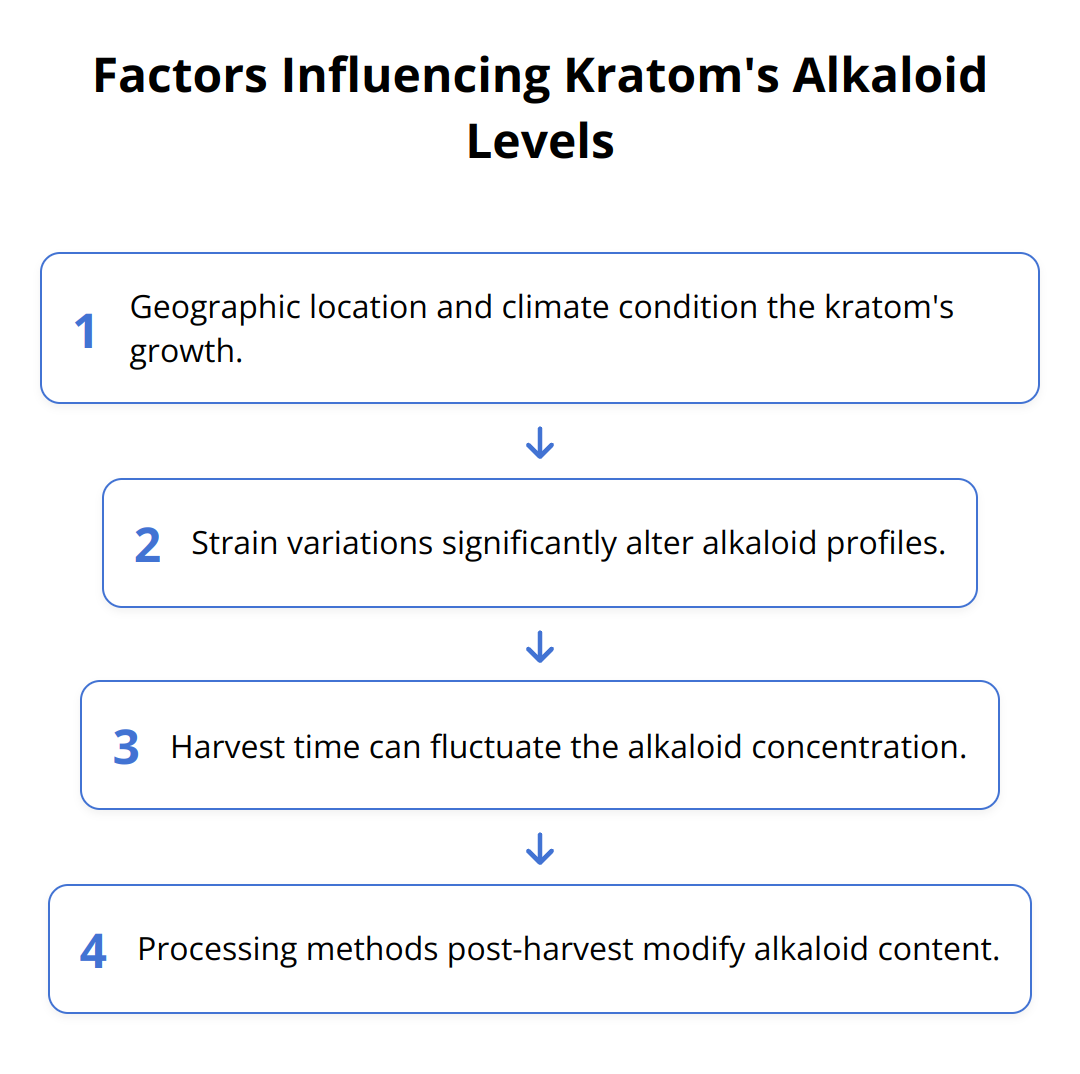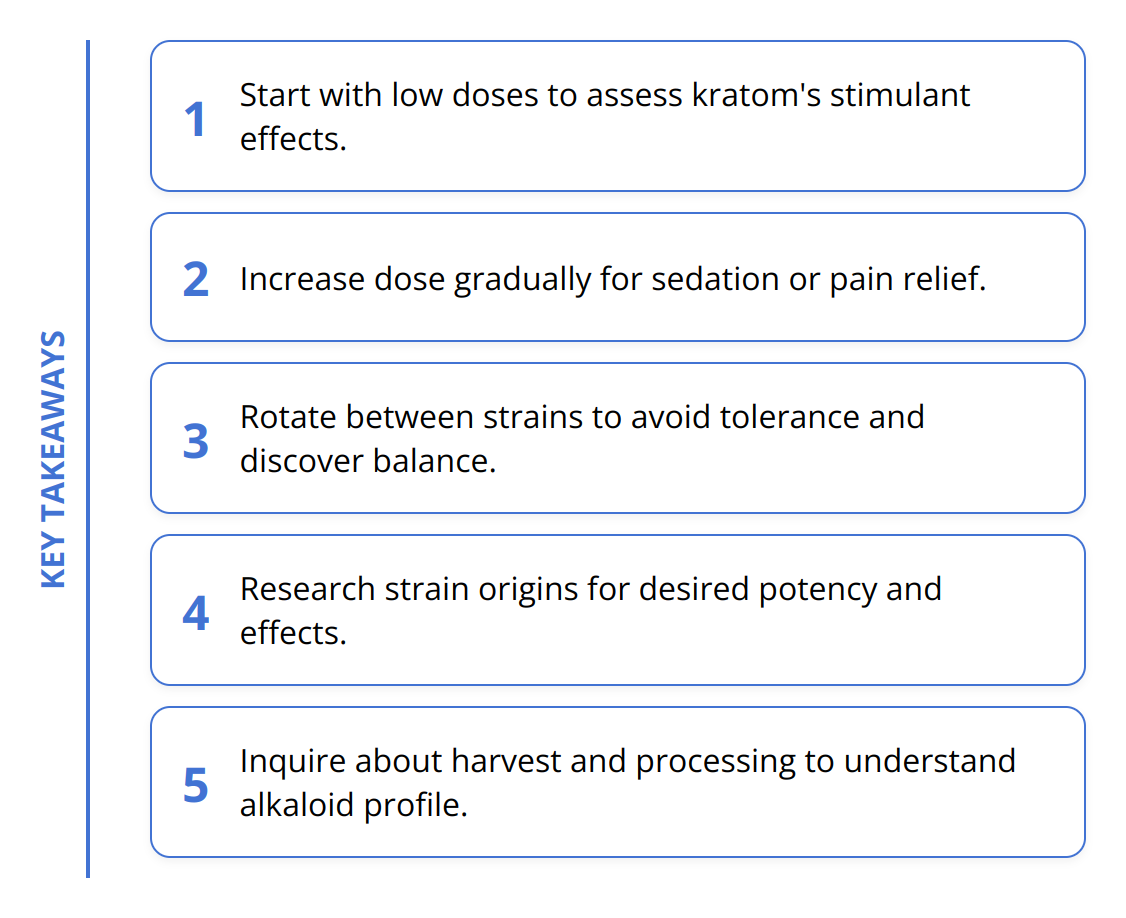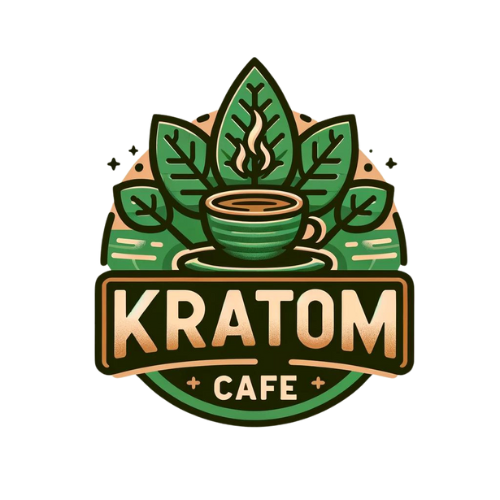Kratom’s unique effects have piqued the curiosity of many, leading to an increased desire to understand what drives these outcomes. At the heart of this intrigue lies the alkaloids present within kratom leaves. We at Kratom Cafe believe that a deeper understanding of these chemical compounds is essential for both new and experienced users. This post aims to shed light on kratom alkaloids and their significant roles in influencing the plant’s effects on the body.
Understanding Kratom Alkaloids
Kratom’s remarkable effects on the human body can be attributed largely to its complex alkaloid profile. Alkaloids are a group of naturally occurring compounds mostly found in plants. They contain nitrogen atoms and have pronounced physiological effects on humans and animals. Kratom leaves are rich in these compounds, which vary in concentration depending on the strain, region of growth, and other environmental factors.
The Key Players in Kratom’s Alkaloid Profile
Among the over 40 identified alkaloids in kratom, mitragynine and 7-hydroxymitragynine take center stage due to their dominant roles. Mitragynine is known for its ability to boost energy and alleviate pain at lower doses. On the other end, 7-hydroxymitragynine, though present in smaller amounts, is potent and contributes to the plant’s pain-relieving and sedative effects at higher doses. It’s important to understand the implications of these alkaloids for tailored usage and achieving desired outcomes.

How Alkaloids Interact with the Body
Alkaloids in kratom engage with the body’s central nervous system, specifically binding to opioid receptors. This binding process is what triggers the significant effects associated with kratom use, from stimulation and increased energy through to sedation and pain relief. Despite these interactions, it’s crucial to note that kratom does not follow the same dependency or addiction pathways typically associated with conventional opioids. This distinct characteristic of kratom alkaloids underscores the unique, albeit still to be fully understood, nature of how kratom affects the body.
A practical approach for anyone considering kratom is starting with lower doses to observe its stimulant effects and only gradually increasing the dose under careful consideration for more sedative outcomes. Each individual’s experience with kratom can vary significantly depending on age, body weight, tolerance levels, and specific strains used. This variability highlights the importance of responsible usage and paying close attention to how your body responds.

For more detailed information on kratom alkaloids and their effects, consider exploring Kratom Vein Differences and Kratom Blends Review, which provide insights into how different strains and combinations can produce diverse effects.
In summary, kratom’s alkaloids are key to its efficacy in pain management, enhancing mood, and improving energy levels. Being informed about these compounds empowers users to make educated decisions regarding their kratom consumption for optimal benefits.
Exploring Kratom’s Alkaloids
The dynamic effects of kratom are primarily driven by its rich alkaloid content. Understanding the roles and benefits of its most prominent alkaloids, particularly mitragynine and 7-hydroxymitragynine, along with other noteworthy compounds, can guide users in optimizing their experience with kratom.
Mitragynine: The Energy Booster
Mitragynine stands as the most abundant alkaloid in kratom, accounting for up to 66% of the alkaloid content in some strains. Its primary effect is providing a boost in energy and improved focus, particularly at lower doses. For individuals seeking to enhance their productivity or combat fatigue, focusing on kratom strains high in mitragynine is advantageous. Practical advice includes beginning with small doses, especially for new users, to assess tolerance and gradually adjust based on personal experience.

7-Hydroxymitragynine: The Pain Reliever
Though less abundant, 7-hydroxymitragynine is a potent alkaloid with significant pain-relieving properties. Its strength lies in its ability to offer both pain relief and sedative effects at higher dosages, making it a key component for those using kratom for managing chronic pain or achieving relaxation. Users aiming for these effects might want to explore strains known for their high 7-hydroxymitragynine content. However, due to its potency, careful dose management is essential to avoid undesired sedation.
Other Notable Alkaloids
Beyond these two, kratom includes a spectrum of alkaloids with various effects:
-
Speciociliatine: A weaker opioid agonist, contributing to the overall mood-lifting effects.
-
Paynantheine: Primarily responsible for kratom’s muscle-relaxant properties.
-
Speciogynine: Works synergistically with other alkaloids to enhance relaxation.
For those interested in immunity or muscle relaxation, selecting a balanced strain that offers a mix of these alkaloids could be beneficial. Users should bear in mind, however, that the efficacy of these alkaloids can be influenced by multiple factors including age, body composition, and consistency of use.
The understanding of kratom’s alkaloid profile is crucial for tailoring your experience to suit specific needs, such as energy, pain relief, or relaxation. It’s not just about the strain, but the unique alkaloid composition that determines the impact. Tracking how different strains affect you personally can offer valuable insights and lead to a more rewarding experience with kratom.
For those looking to dive deeper into the specifics of kratom alkaloids and their effects, articles such as Kratom Pain Relief Tips can offer detailed guidance and recommendations.
Influencing Kratom Alkaloid Levels
Understanding what influences kratom’s alkaloid content is key to maximizing its benefits. The potency and effects of kratom largely depend on its alkaloid profile, which can be affected by several factors including geographic location, climate, the strain of kratom, harvest time, and processing methods. Knowing these factors can guide users towards making informed decisions about their kratom choices.

The Impact of Geography and Climate
Kratom’s alkaloid content is significantly influenced by where the plant is grown. The tropical climates of Southeast Asia provide the perfect conditions for kratom trees to flourish. Regions with rich soil and a balance of sunlight and rain can increase the concentration of alkaloids like mitragynine and 7-hydroxymitragynine. For instance, kratom from Indonesia might have a different alkaloid profile than kratom grown in Thailand, due to variations in environmental conditions.
- Practical Tip: If you’re seeking kratom with specific effects, research the origin of the strains you are considering. Different regions can produce kratom with varying levels of potency.
Strain Variations Matter
Strains are distinguished by the color of the leaf veins and can have vastly different alkaloid profiles. White vein strains often contain higher levels of energizing alkaloids, while red vein strains are richer in relaxing and pain-relieving alkaloids. Green vein strains usually offer a balance between the two.
- Practical Tip: To experience a wide range of effects, consider rotating between different strains. This not only prevents tolerance build-up but also allows you to find the perfect balance for your needs.
Harvest Time and Processing
The timing of the harvest plays a critical role in determining the alkaloid content of kratom. Leaves picked at different times of the year may have varying levels of alkaloids. Additionally, the processing method post-harvest, such as drying techniques and exposure to sunlight, can alter the alkaloid composition. Fermentation, for example, is used to produce some red vein strains, enhancing their sedative effects.
- Practical Tip: Before purchasing, inquire about the harvesting and processing methods used to understand how they may affect the alkaloid profile of your kratom.

In conclusion, the alkaloid content—and consequently, the effects—of kratom can be influenced by many factors. Knowledge of these aspects allows users to choose strains that best meet their needs and expectations. For those interested in learning which kratom might be best for enhancing mood or pain relief, exploring resources like Kratom for Anxiety and Pain Relief Tips can provide additional guidance.
Final Thoughts
Alkaloids play a seminal role in defining the unique effects kratom has on its users, from enhancing energy to providing relief from pain. The interplay between these chemical compounds and our bodies is complex and fascinating, underscoring the importance of a well-rounded understanding of kratom’s alkaloid profiles. For both new and seasoned users, grasping the nuances of these profiles can significantly influence the efficacy and experience of kratom usage.

At Kratom Cafe, we emphasize the value of education and research in navigating the world of kratom. Knowledge is power, especially when it comes to utilizing kratom responsibly and effectively. Whether you are seeking to enhance your wellbeing, manage pain, or simply explore the botanical uniqueness of kratom, understanding its alkaloid makeup is essential.
We encourage our readers to continue their journey of discovery about kratom. The potential therapeutic benefits, coupled with responsible use, could unlock significant improvements in quality of life for many. As such, further research into kratom’s alkaloids, their effects, and optimal use methods remains paramount. The scientific community is just scratching the surface of what kratom can offer, and ongoing studies promise to shed more light on this intriguing plant.
We at Kratom Cafe are committed to being your partner in this exploration, providing up-to-date, factual, and comprehensive information about kratom. Whether you are curious about the latest research, seeking advice on strains and dosage, or looking to connect with the kratom community, Kratom Cafe is your go-to destination. For an extensive dive into everything kratom has to offer, visit our website.
Understanding kratom’s complexities can enrich your experience and help you make informed decisions tailored to your individual needs and goals. Let’s continue to learn, grow, and share in the wonders of kratom together.

